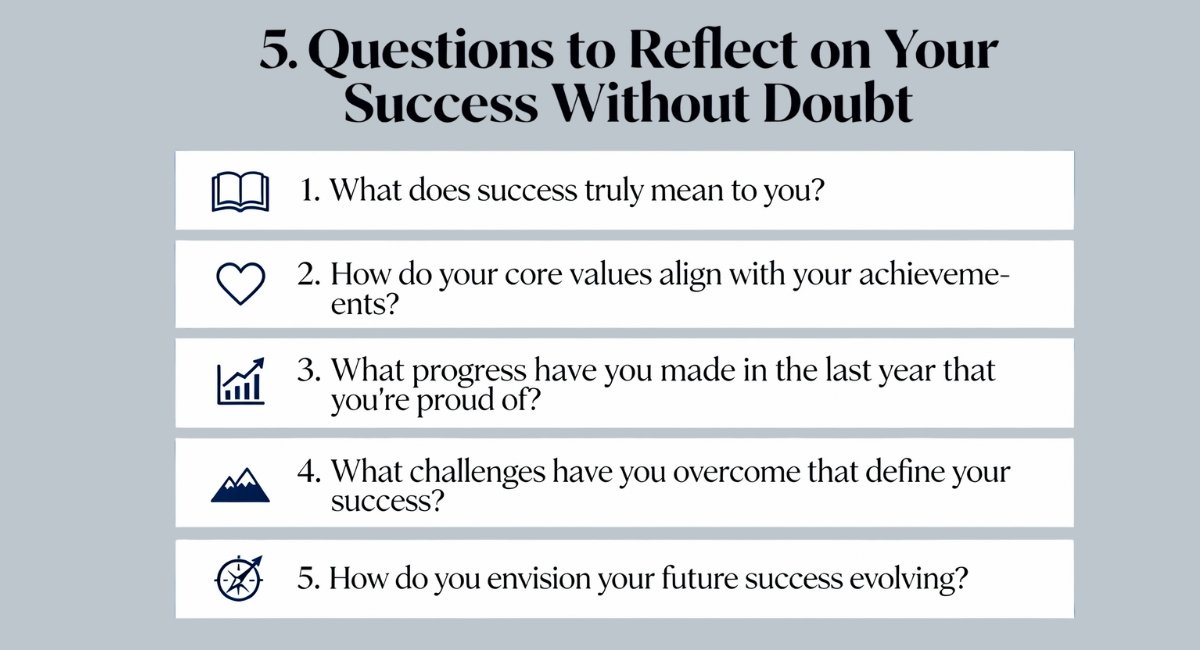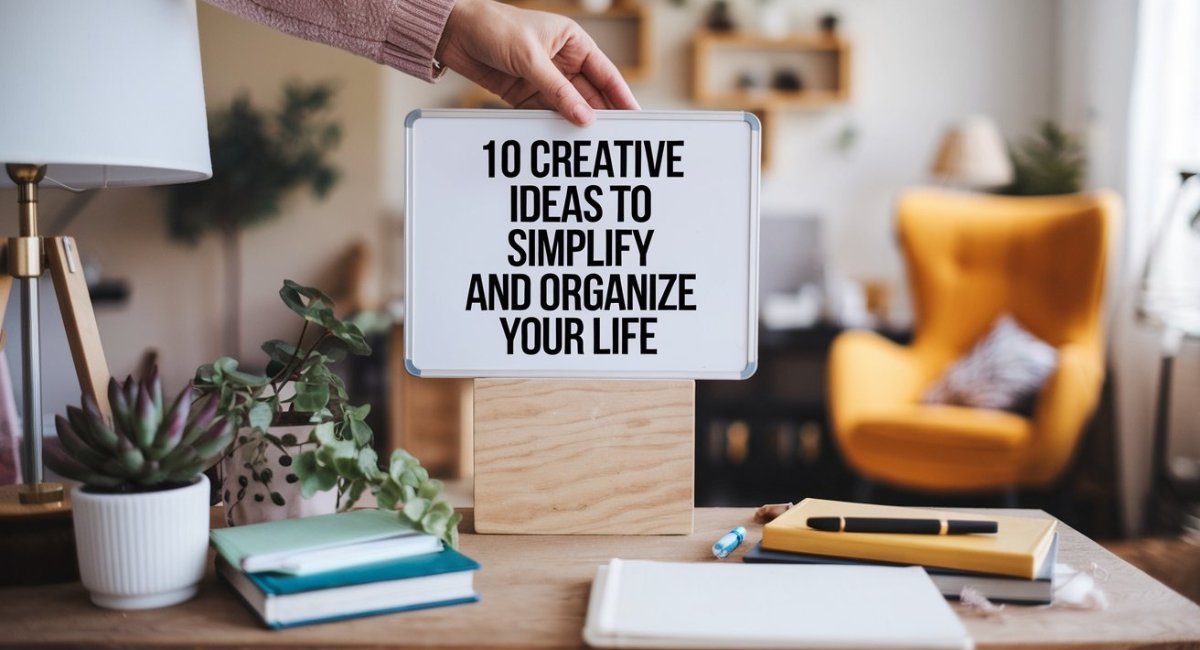How to Get Ahead: The Power of Starting Today
This post contains paid and/or affiliate links. I make a small commission at no extra cost to you. Please see our Privacy Policy.
Every day is a new chance to move forward. Waiting for the “perfect moment” to start might not be the best plan. Taking action now can make all the difference between success and getting stuck.
Thinking about what you can do today can be very empowering. It sets the stage for a better tomorrow.
Understanding the Importance of Action
Starting is key to reaching your goals and building confidence. Every step you take adds momentum. It’s easy to get stuck by overthinking too much.
By focusing on today’s tasks, you make big dreams feel doable.
Benefits of Taking Action
- Builds Confidence: Every small step boosts your confidence. Seeing progress motivates you to keep going.
- Encourages Momentum: Action builds a cycle of improvement. The more you do, the easier it gets.
- Enhances Learning: Action teaches valuable lessons. Mistakes help you grow and learn.
- Reduces Procrastination: Starting now reduces stress about unfinished tasks. It helps you focus on what’s important.
How to Get Started Today
Starting today doesn’t have to be hard. Here are some easy steps to add to your day:
- Set Clear Goals: Define what you want to achieve. Make your goals specific and measurable. Instead of saying “I want to get fit,” try “I will walk for 30 minutes every day.”
- Break It Down: Big projects can feel overwhelming. Break them into smaller tasks. Completing these tasks gives you a sense of accomplishment.
- Prioritize Tasks: Use the “Eisenhower Matrix” to prioritize. Distinguish between what is urgent and important. Focus on tasks that align with your goals.
- Set a Timer: Use the Pomodoro Technique by setting a timer for 25 minutes and working without interruption. Afterward, take a short break. This method increases focus and productivity.
- Limit Distractions: Identify what distracts you and find ways to minimize these interruptions. This might mean turning off notifications or creating a dedicated workspace.

Stay Accountable
Sharing your goals with others can help you stay on track. When people know what you’re working toward, you create accountability. Surrounding yourself with supportive people can motivate you to keep going.
Sample Accountability Strategies
| Method | Description |
|---|---|
| Accountability Partner | Work with someone who shares similar goals and check in regularly. |
| Social Media | Share your progress on social platforms to receive encouragement from your network. |
| Goal Tracking Apps | Use mobile apps to log your progress and remind you of your commitments. |
The Role of Mindset
Your mindset plays a big role in taking action. Having a growth mindset can greatly influence your success. When you believe in your ability to improve and adapt, you’re more likely to take risks and face challenges head-on.
Strategies to Overcome Procrastination
Procrastination can hold you back from achieving your goals and dreams. It can cause stress and make you feel overwhelmed. But, you can beat procrastination with the right strategies. Here are some practical steps to help you get started:
Understand Your Triggers
Identifying what makes you procrastinate is the first step to change. Common triggers include:
- Fear of failure
- Lack of motivation
- Perfectionism
- Feeling overwhelmed
- Distractions from technology
Knowing these triggers helps you develop strategies to overcome them.
Set Clear Goals
Setting clear goals makes it easier to stay focused. Use the SMART criteria to guide you:
- Specific: Make your goals clear and detailed.
- Measurable: Ensure you can track your progress.
- Achievable: Set realistic goals that you can accomplish.
- Relevant: Align your goals with your broader objectives.
- Time-bound: Set a deadline to create urgency.
Break Tasks Into Smaller Steps
Big projects can feel overwhelming. Break them down into smaller steps. For example:
- If your goal is to write a report, outline the main sections first.
- Then, write one section each day.
- review and make adjustments.
This makes starting easier and less overwhelming.

Create a Productive Environment
Your surroundings affect your focus. Here’s how to create a productive space:
- Minimize distractions by turning off notifications on your devices.
- Designate a specific workspace free from interruptions.
- Keep your workspace organized and clutter-free.
Use Time Management Techniques
Time management helps you stay organized. Try the Pomodoro Technique:
- Work for a focused 25 minutes.
- Take a 5-minute break.
- After four pomodoros, take a longer break of 15-30 minutes.
This boosts productivity and prevents burnout.
Hold Yourself Accountable
Sharing your goals with someone helps you stay on track. Consider these strategies:
- Find a partner to discuss your progress regularly.
- Join a group with similar interests to inspire and motivate each other.
- Use social media or blogging to share your journey.
Reward Yourself
Celebrate your achievements, no matter how small. Rewarding yourself boosts positive behavior. Here are some ideas:
- Enjoy a favorite snack after completing a task.
- Take a short walk or break to recharge.
- Spend time on a hobby or activity you love.
Practice Self-Compassion
Be kind to yourself when facing setbacks. Remember, everyone struggles with procrastination. Aim to:
- Recognize that perfection isn’t always necessary.
- Learn from your mistakes instead of dwelling on them.
- Practice mindfulness to stay present and reduce stress.
Stay Committed
Changing habits takes time and effort. Commit to these strategies daily. Allow yourself grace as you work toward your goals. Regularly evaluate your progress and adjust as needed. Remember, you have the power to change your habits and get ahead by starting today!
With consistent effort and determination, you can overcome procrastination. By understanding your triggers, setting goals, creating a productive environment, and staying committed, you’re well on your way to achieving success. Take that first step, and you’ll be amazed at how much you can accomplish!
Setting Effective Goals for Immediate Impact
Have you ever felt like your dreams are just out of reach? Setting effective goals can make those dreams a reality. When you craft specific and practical goals, you can guide your actions and make meaningful progress in the areas you care about the most. Here’s how to set goals that can have an immediate impact on your life.
Understand the Importance of Specificity
Vague goals often lead to vague results. Instead of saying, “I want to be healthy,” try setting a specific goal like, “I want to exercise for 30 minutes, three times a week.” Being specific clarifies what you want and gives you a clear metric to measure your progress against.
Break Goals into Achievable Steps
Start by breaking down big goals into smaller steps. This makes it easier to manage each part. For example, aiming to read 12 books a year can be broken down into reading one book a month or 10 pages daily. Here’s a visual guide:
| Goal | Monthly Breakdown | Daily Task |
|---|---|---|
| Read 12 books | 1 book per month | 1 book in 30 days = 10 pages a day |
Set a Time Frame
Having a deadline for your goals adds urgency. Deadlines help you stay focused and motivated. For instance, saving $1,200 in a year can be broken down into saving $100 monthly. This makes the goal more achievable.
Write Your Goals Down
Writing down your goals can boost your commitment. Use a journal, type them up, or try a goal-tracking app. Studies show that writing goals down increases your chances of achieving them.
Stay Flexible and Adjust As Needed
It’s important to be flexible with your goals. Life can surprise you with challenges. If you’re struggling, reassess and adjust your goals. This way, you can reflect on your progress and find new opportunities.
Celebrate Small Wins
Every step toward your goals is worth celebrating. Celebrating small victories builds momentum and motivation. For example, finishing a monthly book can be rewarded with a treat or a movie night.
Share Your Goals with Others
Sharing your goals can give you extra support and accountability. When others know your goals, they can encourage and check in on you. Discussing your goals can also open up new insights and ways to achieve them.
Review and Reflect Regularly
Make time weekly or monthly to review your goals and progress. Ask yourself what worked and what didn’t. This reflection can help you refine your approach and set even better goals in the future.
Getting ahead in life is simpler than you think. By setting effective goals, you create a roadmap for growth. Focus on being specific, break down challenges, set deadlines, write them down, stay flexible, celebrate wins, share with others, and review regularly. These steps will keep you on track and inspire you to reach your full capacity.
Create your plan today. The time for action is now. What goals will you set to change your life starting today?

Cultivating a Growth Mindset for Future Success
Adopting a growth mindset can change your life. It’s about believing you can improve through effort and learning. This mindset can turn obstacles into opportunities. Here’s how to cultivate a growth mindset for your goals.
The Basics of a Growth Mindset
A growth mindset is different from a fixed mindset. People with a growth mindset see challenges as opportunities to grow. Here are key traits of a growth mindset:
- Embracing Challenges: They see challenges as chances to grow.
- Perseverance: They are resilient and keep going, even when it’s hard.
- Learning from Criticism: They use feedback to improve, not get discouraged.
- Inspired by Others’ Success: They find inspiration in others’ achievements.
Steps to Cultivate a Growth Mindset
Changing your mindset takes time and effort. Here are steps to help you grow:
1. Change Your Language
The words you use shape your mindset. Say “I can’t do this yet” instead of “I can’t do this.” This opens up possibilities and curiosity.
2. Set Learning Goals
Focus on learning, not just results. Aim to understand the subject, not just get a grade. This way, you see your progress.
3. Embrace Challenges
Look for challenges outside your comfort zone. They help you grow and learn. Sticking to the easy path means missing out.
4. Celebrate Effort
Value your effort, no matter the outcome. This shows that hard work improves you, making future challenges easier.
5. Surround Yourself with Positivity
Be around people who think positively. Their encouragement and feedback motivate you to reach further.
How a Growth Mindset Affects Success
A growth mindset brings many benefits:
- Improved Problem-Solving: You see problems as puzzles, not dead ends.
- Greater Resilience: You bounce back from failures, staying on track.
- Enhanced Creativity: Being open-minded sparks creativity and innovation.
- Stronger Relationships: Valuing learning improves communication and teamwork.
Real-Life Applications
Many successful people have a growth mindset. Here are inspiring examples:
| Individual | Area of Success | Growth Mindset Traits |
|---|---|---|
| Thomas Edison | Invention | Persistence in failure and learning from mistakes |
| J.K. Rowling | Writing | Emphasis on resilience and growth through rejection |
| Michael Jordan | Basketball | Constant self-improvement and overcoming setbacks |
Final Thoughts
Adopting a growth mindset changes how you face challenges. By living these principles, you lay the groundwork for lifelong learning and success. Success is about the journey, not just the end. Start today and see your perspective change!
Building Productive Habits That Last
Creating lasting habits is key to success. You aim to make lasting changes, not just temporary ones. Here are strategies to build habits that last.
Identify Your Goals
First, define your goals. Know what you want to achieve and why it matters. Clear goals motivate and guide you.
- Define Your Why: Knowing your reasons keeps you committed.
- Set Specific Targets: Instead of “I want to get fit,” aim for “I will walk 30 minutes each day.”
Start Small
Begin with small steps when changing your behavior. The “one percent rule” suggests improving a little each day.
- Micro-habits: Start with 5 minutes of exercise daily instead of a full workout.
- Incremental Changes: Gradually increase your habit’s intensity or duration as you get more comfortable.
Create a Routine
Being consistent is key to building lasting habits. A good routine helps make your new habits a part of your daily life.
- Schedule It: Pick a specific time each day for your new habit. This helps make it a regular part of your routine.
- Use Reminders: Set alarms or notes to remind you to stick to your routine.
Track Your Progress
Tracking your success can keep you motivated. It also helps you see patterns and make changes.
- Daily Journaling: Keep a journal to track your progress.
- Habit Tracker Apps: Use apps to easily monitor your habits.

Accountability Partners
Having someone to support you can really help. An accountability partner can give you encouragement and feedback.
- Find a Buddy: Choose someone with similar goals for mutual motivation.
- Join a Group: Look for a community of people with similar goals for support.
Adjust, Don’t Abandon
As you go along, you might find some parts of your habit don’t work as well. Instead of giving up, try adjusting your approach.
- Evaluate Regularly: Check in with yourself weekly to see what’s working and what’s not.
- Be Flexible: Don’t be afraid to change your method or timing if it works better for you.
Celebrate Milestones
Recognizing your achievements boosts your motivation. Celebrate even the small victories along the way.
- Set Milestones: Break down big goals into smaller, achievable milestones.
- Reward Yourself: Treat yourself when you reach each milestone to keep the positive vibes going.
Using these strategies can help you build lasting habits. Remember, everyone’s journey is unique, and patience is essential. Focus on making progress, not perfection. Before you know it, your new habits will be a big part of your life.
| Habit Building Strategy | Examples |
|---|---|
| Identify Your Goals | Define your why, set specific targets |
| Start Small | Micro-habits, incremental changes |
| Create a Routine | Schedule it, use reminders |
| Track Progress | Daily journaling, habit tracker apps |
| Accountability Partners | Find a buddy, join a group |
| Adjust, Don’t Abandon | Evaluate regularly, be flexible |
| Celebrate Milestones | Set milestones, reward yourself |
Using these strategies not only improves your habit-building but also makes the journey more rewarding. So take a step today, and watch your world change one habit at a time.
Conclusion
Starting today can change your life for the better. Overcoming procrastination leads to quick progress. The first step might look hard, but setting goals makes it clear how to succeed.
It’s key to celebrate every small win. This keeps you motivated and moving forward. Remember, each challenge is a chance to learn and grow.
Having a growth mindset helps you see obstacles as learning opportunities. This mindset makes you resilient. The habits you build today will shape your future.
Being consistent and productive keeps you on track. It makes it easier to stay focused and motivated. This helps you keep moving toward your goals.
Knowing these strategies gives you the power to take control of your life. Starting today is powerful. Every moment is a chance to move closer to your dreams.
So, don’t wait to start. Take that first step today. Your commitment to action will change your life. The time to move forward is now—seize it!



